Why You DON'T Need to Wait 3-5 Days Between New Foods with Carina Venter, PhD, RD
- The importance of diet diversity
- Why some pediatricians recommend waiting 3-5 days between all new foods
- Emerging and current research on allergen introduction and allergy prevention

LISTEN TO THIS EPISODE
Have you heard the recommendation to wait 3-5 days between trying new foods with your baby? Did you know that there is no evidence or research to back this guidance up? In fact, waiting unnecessarily long periods of time between new foods all but ensures that babies WON’T get the diet diversity that other research shows they really NEED to succeed with growth and development.
Introducing 1 new food per day is perfectly safe for your baby. Carina Venter, PhD, RD is joining me on this interview to tell you why you do NOT need to wait 3-5 days between new foods for your baby. And if that’s the recommendation you’re hearing from your pediatrician, Carina also breaks down why doctors are still perpetuating this outdated notion despite the emerging body of literature that supports more rapid exposure to new foods.
Carina Venter is one of the most recognized authorities in the area of pediatric food allergy prevention and research. She’s on many of the nutrition advisory panels that study the evidence about starting solids and put forth recommendations for new food and allergenic food introduction. If you’re not already convinced that babies can eat a greater variety of foods than most doctors would give them credit for, this interview with Carina Venter is going to make a believer out of you too!
SHOW NOTES
SUMMARY of episode
In this episode, I’m joined by Carina Venter, Ph.D., RD!
Dr. Venter talks about:
The importance of diet diversity
Why some pediatricians recommend waiting 3-5 days between all new foods
Emerging and current research on allergen introduction and allergy prevention
LINKS from episode
Follow Carina Venter, PhD, RD on Twitter
More info about Carina’s work on her homepage
View Dr. Venter’s allergy-related research publications
Dietitians earn your FARE Certificate of Training in Pediatric Food Allergy in this 9-month (32 CPE) course Carina co-teaches for FARE
Dietitians join IDANA: International Network for Diet and Nutrition in Allergy here
TRANSCRIPT of episode
RESEARCH links from the episode
Samady, W., Campbell, E., Aktas, O. N., Jiang, J., Bozen, A., Fierstein, J. L., ... & Gupta, R. S. (2020). Recommendations on complementary food introduction among pediatric practitioners. JAMA network open, 3(8), e2013070-e2013070.
Johnson, J. L., Gupta, R. S., Bilaver, L. A., Hu, J. W., Martin, J., Jiang, J., ... & Togias, A. (2020). Implementation of the Addendum Guidelines for Peanut Allergy Prevention by US allergists, a survey conducted by the NIAID, in collaboration with the AAAAI. Journal of Allergy and Clinical Immunology, 146(4), 875-883.
Fleischer, D. M., Chan, E. S., Venter, C., Spergel, J. M., Abrams, E. M., Stukus, D., ... & Greenhawt, M. (2020). A Consensus Approach to the Primary Prevention of Food Allergy Through Nutrition: Guidance from the American Academy of Allergy, Asthma, and Immunology; American College of Allergy, Asthma, and Immunology; and the Canadian Society for Allergy and Clinical Immunology. The Journal of Allergy and Clinical Immunology: In Practice. https://pubmed.ncbi.nlm.nih.gov/33250376/
Togias, A., Cooper, S. F., Acebal, M. L., Assa’ad, A., Baker, J. R., Beck, L. A., ... & Fleischer, D. M. (2017). Addendum guidelines for the prevention of peanut allergy in the United States: report of the National Institute of Allergy and Infectious Diseases-sponsored expert panel. Allergy, Asthma & Clinical Immunology, 13(1), 1-20.
Schroer, B., Groetch, M., Mack, D. P., & Venter, C. (2020). Practical Challenges and Considerations for Early Introduction of Potential Food Allergens for Prevention of Food Allergy. The Journal of Allergy and Clinical Immunology: In Practice.
Venter, C., Hasan Arshad, S., Grundy, J., Pereira, B., Bernie Clayton, C., Voigt, K., ... & Dean, T. (2010). Time trends in the prevalence of peanut allergy: three cohorts of children from the same geographical location in the UK. Allergy, 65(1), 103-108.
Koplin, J. J., Peters, R. L., Dharmage, S. C., Gurrin, L., Tang, M. L., Ponsonby, A. L., ... & Allen, K. (2016). Understanding the feasibility and implications of implementing early peanut introduction for prevention of peanut allergy. Journal of Allergy and Clinical Immunology, 138(4), 1131-1141.
WANT MORE BLW INFO?!
SUBSCRIBE to the Baby-Led Weaning Made Easy Podcast - new episodes are released on Monday and Thursday and subscribing means you’ll never miss what’s new (+ you’ll get notified about special bonus episodes too!)
FOLLOW Katie’s baby-led weaning Instagram page @babyledweanteam for daily video trainings - lots of great info on interpreting your baby’s feeding behaviors here too!
SIGN UP for Katie’s free online workshop “BABY-LED WEANING FOR BEGINNERS: How to get your baby to try 100 foods before turning 1 without you having to spoon-feed purees or buy pouches” - everyone on the free workshop gets a copy of the 100 FIRST FOODS LIST so you can focus on trying new foods that your baby CAN and WANTS to self-feed! Sign up for this week’s workshop times.

Latest Episodes
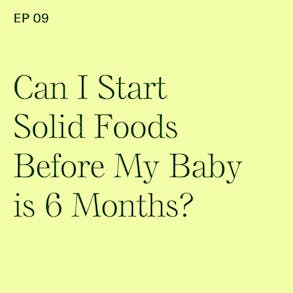
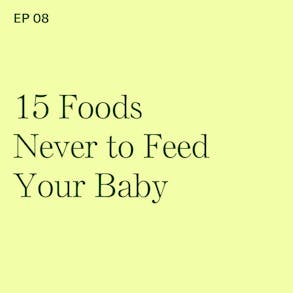
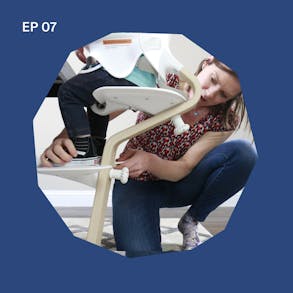
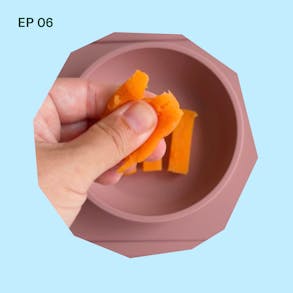
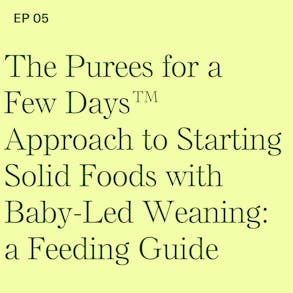

0 (1s):
Look, Bumble knows you're exhausted by dating all the must not take yourself too seriously. And six one since that matters. And what do I even say other than, hey, well that's why they're introducing an all new bumble with exciting features to make compatibility easier, starting the chat better and dating safer. They've changed so you don't have to download the new Bumble. Now
1 (29s):
At a time when change is constant and we are pulled in far too many directions. We need a way to stay present to life and to increase our ability to remain calm, think clearly, and maintain our wellbeing. Many studies indicate mindfulness improves our mental, emotional and physical health. On a mindful moment with Theresa McKee, you can learn how to practice mindfulness and enjoy its many benefits. Tune in for guided meditations and to hear tips and advice from some of the most respected experts in the fields of mental health and mindfulness. The world truly can be a better place.
1 (1m 9s):
It all starts with a mindful moment.
3 (1m 13s):
And if you ask parents, well, why are you waiting three to five days between new foods? First they'll say, oh, my doctor told me to. And then the rationale behind that is generally, well, I wanna be cautious and I wanna observe for any potential allergic reaction. But the reality is the vast majority of food allergy reactions, if they're going to occur, are going to occur within minutes and up to no more than two hours following ingestion. So it's not like you feed your baby a strawberry and then three days later there's a weird diaper and you're like, oh my gosh, they're allergic to strawberries. It doesn't work like that. Hey there, I'm Katie Ferraro, registered dietician, college nutrition professor and mom of seven specializing in baby lead weaning here on the baby led weaning with Katie Ferraro podcast.
3 (1m 55s):
I help you strip out all of the noise and nonsense about feeding, giving you the confidence and knowledge you need to give your baby a safe start to Solid Foods using baby led weaning. Well, hello and welcome back. If there is one myth that is persistent and perpetual in the infant feeding world, it's this idea that parents need to wait three to five days between introducing new foods for their baby, right? And when we're starting something new, of course we wanna be cautious. We've never done it before. We wanna see if the baby's okay. And when you ask parents, okay, well where did you hear this? They'll say, oh, my doctor told me I need to wait a few days or three to five days between offering new foods to my baby.
3 (2m 42s):
And in this episode, I wanna show you why that's not true. And In fact, if you wait that long between new foods, you can actually be holding your baby back with regards to their potential to achieve diet diversity. Diet diversity is this idea that babies will like and accept a wide variety of foods and flavors and tastes and textures as long as we offer them those foods during the all important flavor window. And the flavor window is this brief period of time where your baby is open to trying all the new foods and flavors and tastes and textures. So if we take that short period of time and then unnecessarily add days and days in between new foods, your baby will never get that variety of exposure that we want early and often.
3 (3m 22s):
Now, I'd like to start each of these solo training episodes with a baby led weaning tip of the day. And today's tip, before I give it, I'm gonna back it up. When you say to parents, why are you waiting three to five days between new food? They say, oh, it's 'cause I wanna observe for any potential allergic reaction. So the idea being I'm gonna feed my baby a strawberry, and then three days later there's a weird diaper and I'm like, oh my gosh, they're allergic to strawberries. Spoiler alert, that is not how it works. Today's baby led weaning tip of the day is that if your baby is going to have an allergic reaction to food, the vast majority of these reactions are going to occur within minutes and up to no more than two hours following ingestions. Again, I think this is so important because it literally explains why you don't have to wait three to five days between new foods.
3 (4m 7s):
'cause if you hear a doctor say, oh, you wanna go slow, you wanna introduce new foods, they'll tell you the rationale is 'cause you wanna observe for any potential allergic reactions. But again, if your baby is going to have an allergic reaction, the vast majority of these reactions to food will occur within minutes and up to no more than two hours following ingestion. So you do need to observe your baby for two hours after you try that food. And not just the first time, by the way, because if the baby's gonna have an allergic reaction, it's unlikely to occur after the first exposure. It will be after the second or subsequent exposure. So that's why in My program, BABY led weaning with Katie Ferraro, we start with an allergenic food, one allergenic food every Friday.
3 (4m 49s):
So we do five new foods a week. We do a new fruit on Monday, a vegetable on Tuesday, a starchy food on Wednesday, and protein food on Thursday, and an allergenic food on Friday. And we do that new allergenic food twice on Friday, twice on Saturday, twice on Sunday, no other new foods across the weekend. But yes, you continue to reintroduce those familiar foods from previous days. And by the end of that first week, your baby had that first allergenic food exposure six or seven times. And then on Monday of the next week, you start over with five new foods. And so in the first nine weeks of starting solid foods, you knock out all of the top nine allergenic foods. And the point there is that we do those allergenic foods early and often because we know that that's what helps lower the risk of food allergy.
3 (5m 33s):
So if you'd like an exact roadmap of how to do all of these foods in what order with recipes and instructions on how to make them safely for your baby, check out that program. It's called Baby led weaning with Katie Ferraro. You can find it online at baby led weaning dot co slash program. Or I'll link to it in the description. There's 20 weeks of done for you meal plans with my hundred First, Foods, Daily, Meal Plan. We'll walk you through all those foods for your baby so you can get these done safely and early and often. So in today's episode, I wanna cover Why waiting three to five days between new foods actually slows down your baby's progress, how you can safely offer one or more new foods per day, and why this is totally safe. And then when to sequence the introduction of the allergenic foods in order to observe for reaction.
3 (6m 17s):
So let's get started with where does the recommendation to wait three to five days come from? I recently met a mom, she's a newish mom, a second time mom. Her baby is just about to start Solid Foods. And she's actually a documentary filmmaker. She's making a film about starting solid foods. She lives in the town over from me. So we met for lunch and we just had this amazing conversation. And she's a mom, not a trained dietician, not a feeding expert. And she pointed out, gosh, you know, in my research for this film, I realized that the American Academy of Pediatrics totally contradicts itself when it comes to how long to wait between new foods. And I said, aha, you got it. They do. There's some a a p publications that will tell you it's perfectly safe to introduce one new food per day.
3 (7m 2s):
But then there's older ones that will tell you, oh, you need to wait a few days. So in many cases they've removed the language three to five, they say a few days, which remember when you were a kid And you would ask your parents like how long until something? And you'd be like, oh, a few minutes. And you're like, oh, that is so frustrating. 'cause that is not an exact specific answer is a few. Two is a few, three is a few five. But the point is there's no data to support the idea of waiting three to five days between foods. And I'm a college nutrition professor. I've taught college nutrition for over 20 years at this point. And I previously taught at uc San Francisco in their nurse practitioner program. And occasionally we would do classes along with the medical students. And I love to ask the medical students like, where are you guys getting this statement to wait three to five days between new foods?
3 (7m 44s):
'cause they're probably saying it's somewhere in medical school. They say, oh yeah, it's just something that when you do your peds rotation, you always hear that. It's like literally we're just passing along this misinformation. It gets passed down from generation to generation. But please know there is no evidence proving that we need to wait three to five days between new foods. Hey, we're gonna take a quick break, but I'll be right back.
4 (8m 10s):
Hey, it's Kaylee Coco for Priceline. Ready to go to your happy place for a happy price. Well, why didn't you say so? Just download the Priceline app right now and save up to 60% on hotels. So whether it's cousin Kevin's kazoo concert in Kansas City, go Kevin or Becky's Bachelorette Bash in Bermuda, you never have to miss a trip ever again. So download the price line app today. Your savings are waiting.
5 (8m 31s):
Go to your happy place for a happy price, go to your happy price price line.
3 (8m 43s):
Now, why is waiting three to five days between foods not ideal? Well, let's do some math. Okay. If you waited three to five days between new foods, let's take the average, the midpoint there, which is four days between every new food. And when you start Solid Foods at six months of age, if you waited four days between every food, by the time your baby turns 11 months of age, they would've only eaten 38 new foods. Okay? So that's basically between six and 11 months is five months. And we'll take an average of 30 days per month. So that's 150 days divided by four days between foods, you'd get 38 new foods. Now, considering that most conventional adult-led spoonfed babies, they're really only gonna get 12 or 15 foods by the time they turn.
3 (9m 25s):
1 38 might initially sound like a lot, but if you follow that five step feeding framework I was teaching you about earlier in the episode and you introduce five new foods per week. So you would do a new fruit on Monday, a new vegetable on Tuesday, a new starchy food on Wednesday, a new protein food on Thursday, and a new allergenic food on Friday. And again, we repeat that allergenic food six or seven times over the weekend, just testing to make sure the baby is not allergic. And if every week you do five new foods in one month, your baby will have eaten 20 new foods and in five short months, your baby has a hundred different foods before they turn one. Okay? This is the crux and the basis of my hundred First Foods approach to starting solid foods. You can see with baby led weaning and this a hundred First Foods approach, there is a much greater opportunity for your baby to achieve diet diversity.
3 (10m 13s):
Okay? But that only happens if they're offered a wide variety of foods and tastes and textures when that all important flavor window is open. And again, the flavor window is that short period of time where your baby will like and accept a wide variety of foods. So we want to take advantage of that flavor window when it is open. And you can do this by offering your baby one new food a day. Do it five days a week. If you feel like you're getting a late start, please know you can certainly do more than one new food per day. We have many families in our program who are like, I just figured out what baby led weaning is, or I wanna switch from purees, or We're not starting this till eight or nine months. It's perfectly safe to offer one or more new foods per day. We just don't do two new potentially allergenic foods at the same time.
3 (10m 54s):
Because of course, if your baby had a reaction, how would you know which food protein they were reacting to if there were two new ones coming into the system at the same time? So what's the problem with only offering 38 versus a hundred foods before your baby turns one? Well, in the original a hundred First Foods approach to baby led weaning that I created back in 2016, the first phase of baby led weaning is the first eight weeks after we start Solid Foods. And those are the first 40 foods your baby will eat, right? Five foods a week, times eight weeks, you get you to 40 foods in phase one. And with those first 40 foods, we keep it pretty basic. We stick to mostly single isolated foods that are shaped about the size of your adult pinky finger. We don't do a lot of tricky textures. We do not do any combination texture foods in phase one.
3 (11m 37s):
The first eight weeks of baby led weaning those first 40 foods. So usually after a baby has eaten about 40 foods or so, when they pass that first eight week threshold and they've had those first 40 foods, that is when they turn the corner. And that is when they become so competent at self feeding. And if you start this at six months of age or right around there, most babies are sitting at six months plus one week or six months plus two weeks. But generally speaking, if you follow this approach, when you finish phase one of baby led weaning, your baby's usually around the eight month mark. Okay? Now compare that to waiting three to five days slash four days. Your baby's gonna be 11 months of age before they get to 40 foods.
3 (12m 17s):
So we wanna help your baby get to that 40 food mark crossing over into phase two of baby led weaning much earlier. And we're not rushing them, but it is developmentally appropriate for your baby to start eating finger foods at six months of age. So please know you're not rushing anything. And when you get to that 40 food mark and your baby has been eating for about eight weeks, and it's usually around the eight month mark, that's when your baby really, really starts to get the hang of self-feeding. That's when everything clicks. That's when I love to get emails and dms from parents who were like, oh my gosh, it was terrible and tragic and so brutal those first eight weeks, Katie. But then after that, that's when everything clicked.
3 (12m 58s):
And that happens around the eight month mark. That's when your baby will start to pick up the foods more. That's when you're going to start dropping a milk fiend. That is when baby led weaning really happens and is in action. And that's the whole point, right? We're helping your baby go from the six month of age mark when a hundred percent of their nutrition comes from infant milk and we're trying to get them to the 12 month mark when most of their nutrition will be coming from food. But again, those first 40 foods can be brutal. You're gonna feel like your baby is not eating that much. You're gonna think to yourself, why am I even doing this if they don't know how to eat? But if you can condense that brutal period by jamming through a lot of new foods with lots of opportunities to try new foods, your baby will very quickly get the hang of feeding themselves.
3 (13m 43s):
And that will allow you to transition nicely into phase two, which are the second 40 foods. And that's when you're really gonna be having fun with different textures and the trickier combination texture foods. And we know from research that babies who have had the least amount of experience and the least amount of practice with finger foods, they are actually at increased risk of choking compared to those who've had more experience. So the whole idea here is that practice makes progress. Okay? You are unnecessarily slowing your baby down, you're preventing their progress when you delay the introduction of new foods and wait three to five days unnecessarily between new foods. So again, it's perfectly safe for your baby to have one or more than one new food or foods per day.
3 (14m 25s):
And the only way to help your baby achieve diet diversity is to increase the variety of the foods and the flavors and the taste and the textures that they see, which you do by introducing a variety of new foods. So I wanna leave you with a quick win before we close out this episode, and that's how do you go about picking the five new foods to introduce to your baby next week? Okay? If you ask most parents, what foods did you start baby led weaning with? They'll say, avocado, banana, and sweet potato. And then you'll check back in a few weeks and like, what foods can your baby eat? And they'll be like, like avocado, banana, and sweet potato. I don't want you to get stuck on the simple starter foods. I created the original a hundred First Foods list so that you can choose five new foods each week. And that a hundred First Foods list is divided in to five different food categories, fruit, vegetables, starchy foods, proteins, and allergenic foods.
3 (15m 12s):
So you pick one of the fruits for Monday, one of the vegetables for Tuesday, one of the starchy foods for Wednesday, one of the protein foods for Thursday, and then one of the allergenic foods every Friday. Follow that sequence of doing that allergenic foods six or seven times over the course of the weekend, and then the following Monday, go right back to the next five foods. That's five foods a week. It works out to 20 foods a month, five short months from now. You will be so excited because your baby can successfully eat 100 safe baby led weaning foods. If you'd like to learn more about how to make all of those foods safe, if you wanna follow my original hundred First, Foods, Daily, Meal Plan, it's 20 straight weeks of done for you meal plans with recipes and instructions and videos on how to make all of these foods safe.
3 (15m 55s):
You can check out my program, it's called Baby led weaning with Katie Ferraro, that's online at baby led weaning dot co slash program. My hundred First Foods list is in there. Many of you might already have the list and you're like, but don don't know how to make all these foods. Everything you need to get a safe start to Solid Foods is all inside of that program. I do hope you'll check it out. Thank you so much for listening and a special thank you to our partners at AirWave Media. If you guys like podcasts that feature food and science and using your brain, check out some of the podcasts from AirWave Media or online@blwpodcast.com. Take care, and I'll see you next time.
6 (16m 38s):
Are you looking for a podcast your whole family can enjoy together? Check out Culture, kids podcasts. Our adventures will ignite your curiosity for culture, traditions, languages, geography, and even pop culture with interviews from guests all over the world. Through each episode, we aim to help children become empathetic, creative leaders in their communities and help them see the beauty in our differences. And that's Culture Kids Podcast, wherever you get your podcasts.
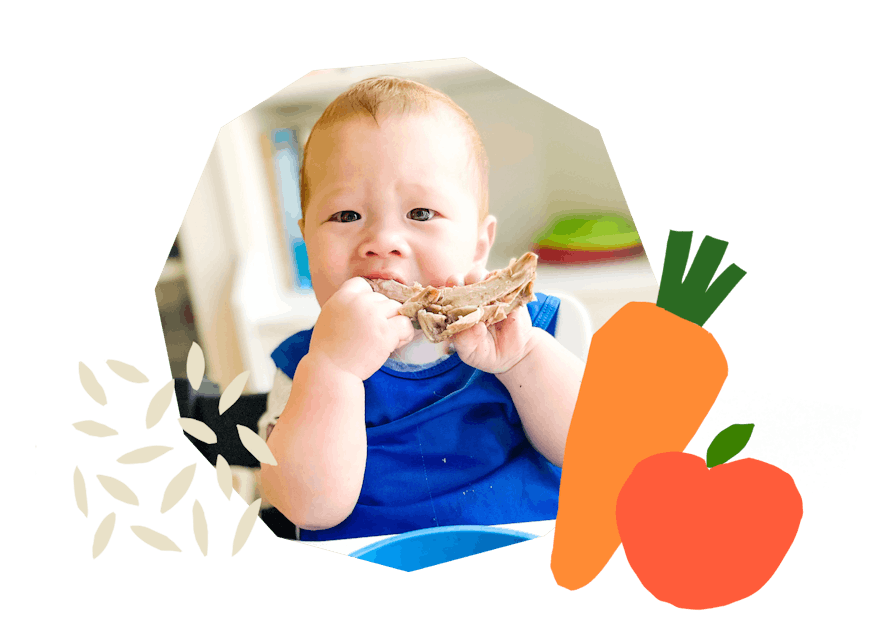
The Program Baby-Led Weaning with Katie Ferraro
A step-by-step digital program for starting solid foods safely and navigating the original 100 FIRST FOODS™ meal plan with baby-led weaning.
 EXPERT-LED, PROVEN APPROACH TO EATING REAL FOOD
EXPERT-LED, PROVEN APPROACH TO EATING REAL FOOD CONCISE VIDEO TRAININGS TO MASTER BABY-LED WEANING
CONCISE VIDEO TRAININGS TO MASTER BABY-LED WEANING 100 FIRST FOODS DAILY MEAL PLAN WITH FOOD PREP VIDEOS
100 FIRST FOODS DAILY MEAL PLAN WITH FOOD PREP VIDEOS
Baby-Led Weaning for Beginners Free Workshop
Is your baby ready to start solid foods, but you’re not sure what to do? Register for this free online video workshop and learn how to give your baby a safe start to solid foods using baby-led weaning. Everyone on this free training receives a copy of Katie’s original 100 FIRST FOODS™ list. You can take this workshop right now, later today when your baby naps, or tomorrow…whatever works for you!
Get baby-led weaning recipes and tips delivered to your email inbox.